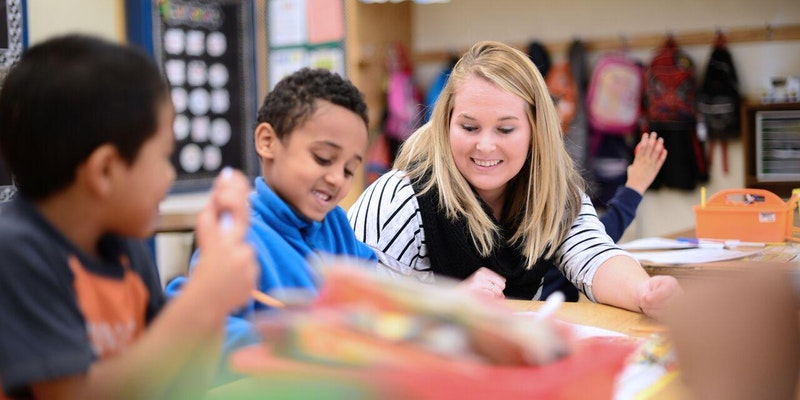
Recognizing where our students come from, what they’re facing, and how we can help them in different ways is a key component of responsive teaching practices. We discussed this and much more during a recent symposium. Guests included keynote speaker Lynda Coates with Communication Across Barriers and Dr. Jill Bryant of Portland Public Schools. Below are our key takeaways.
On students living in poverty
Approach each individual with an open mind.
Be open to learning about their backgrounds, culture, values, and interests. If you have never experienced living in poverty, it can be easy to make assumptions.
- The #1 way we learn about poverty is through the media, which is full of stereotypes and generalizations.
- Poverty doesn’t always look the same. Many in poverty want to look presentable so others might say, “They don’t look like they’re in poverty.”
- We might have the best of intentions in wanting to help a student and his or her family, but it’s as much about our own education as it is about theirs. We must acknowledge what we don’t know, build relationships first, and utilize their strengths rather than think of them as something to fix.
Recognize that school is not always seen as a place of refuge.

Lynda Coates
Although our schools offer students a structured environment away from some of the challenges they might be experiencing at home, education can mean different things to different people.
- Something as seemingly simple as finishing a science project at home might become an insurmountable obstacle. We often take for granted basic supplies like scissors, tape, and glue—items that many don’t have.
- “Education meant stress in my family,” said keynote speaker Lynda Coates. When Coates was a child, her family lived in a camper. They moved often; her parents were constantly afraid that she and her siblings would be taken from them. Although she was the first to graduate high school in her family and went on to earn her master’s degree, she struggled along the way. She finally felt a sense of belonging while in college, where she experienced academic and emotional support, received financial aid, and built relationships with people not in poverty.
On students impacted by trauma
Trauma can impact us in a variety of ways.
- Trauma can refer to “a single event, multiple events, or a set of circumstances that is experienced by an individual as physically and emotionally harmful or threatening and that has lasting adverse effects on the individual’s physical, social, emotional, or spiritual well-being.” – Substance Abuse and Mental Health Services Administration
- There are many different effects that may or may not be experienced by someone who has endured a trauma. The stress response (fight, flight, or freeze) means that suddenly your body reacts as if there’s a threat, whether that threat is real or imagined. These triggers are normal to experience after a trauma. (For more on this, see: This is a Student’s Brain on Trauma.)
- When someone is triggered, his/her adrenaline and cortisol levels dramatically increase and emotions take over.
- These triggers can cause an inability to think critically or access memory. They can also make it difficult to communicate, control impulses, and make decisions.
- A trigger could be something like a siren blaring or being called on to read aloud in class. It might not seem like a big deal to you, but it could trigger the stress response in them.
- When someone experiences trauma for an extended period (such as experiencing poverty, lack of food, or continuous abuse), their nervous system becomes dysregulated and they can experience hypo or hyperarousal. That person needs protective factors to help prevent the long term emotional and physical effects of stress and trauma.
- Due to the behaviors that students can exhibit as a result of trauma, many schools have seen an over-identification in SPED eligibility.
The good news: there’s a lot we can do to help

Dr. Jill Bryant
There are ways to reverse the effects of trauma. “Caring adult relationships are the number one protective factor for kids, and relationships lie at the heart of trauma sensitive practices,” said Dr. Jill Bryant of Portland Public Schools.
- Resilience is partially biological; we’re born with this trait. But Social Emotional Learning helps build resilience in school.
- We can help students build new neural pathways, by showing them how their minds and bodies respond to stress, regulatory activities they can do, and teaching them healthy coping mechanisms so that they can move through adversity and become more resilient.
Working toward a deeper understanding.
Watch Dr. Jill Bryant and her colleague Adrienne Briones’ full talk from the symposium: “Understanding Trauma’s Impact on Student Behavior”.
Explore our resource page that’s dedicated to social-emotional development for children to discover more resources about SEL.
Categorized as: Tips for Teachers and Classroom Resources
Tagged as: Educational Leadership, Toolkit: Community Leadership, Trauma and Resilience
